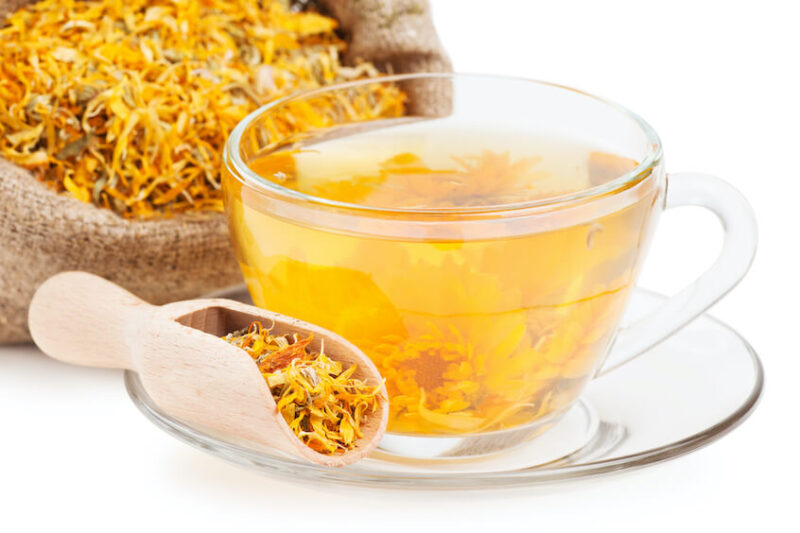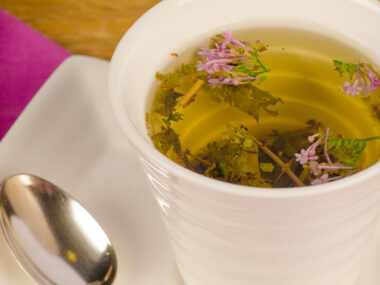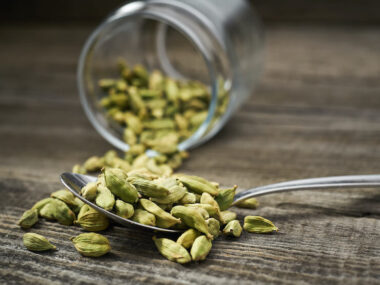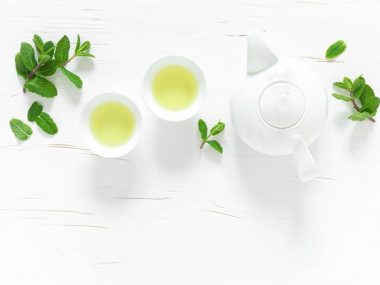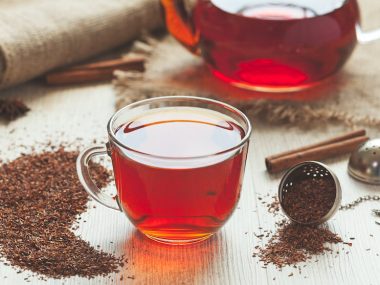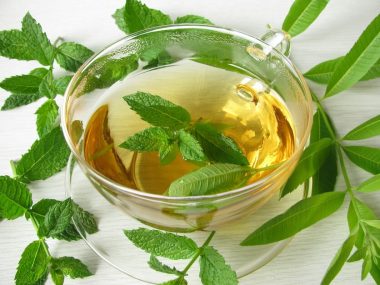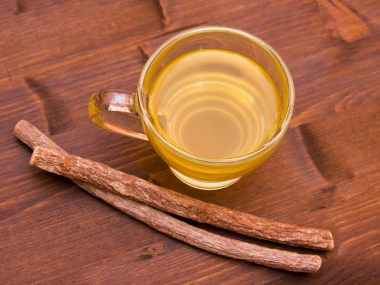A common flower as we know it explodes into a burst of sunshine with its vibrant colors of yellows and oranges. Bottle that up and serve it in a teacup, and you have more than just tea. But what exactly is calendula tea, and why drink it? Let’s dig in!
Table of Contents
What Is Calendula Tea?
Calendula tea is a tisane (herbal tea) made from brewing the flowers of Calendula officinalis (also known as pot marigold.) The flowers of this plant are prevalent in traditional, Chinese, Ayurvedic, and Unani medicine to treat many ailments and conditions.
What Is Calendula?
Calendula is a genus of the Asteraceae family (which includes sunflowers.) There are two species of Calendula— Calendula arvensis (field marigold) and Calendula officinalis (pot marigold.)
It’s easy to get the two confused because they are both considered “marigolds.” However, Calendula arvensis is used to strategically plant in landscapes and gardens to ward off insects. We are taking a close look at Calendula officinalis which is used to make tea.
Calendulaofficinalis (pot marigold) is considered both an herb and a cultivated plant. It is native to the Mediterranean region. The flowers look like orange or yellow daisies and can be single or multi petal. Its antibacterial, antifungal, anti-inflammatory, and other medicinal properties have been embraced as one of the leading used herbs.
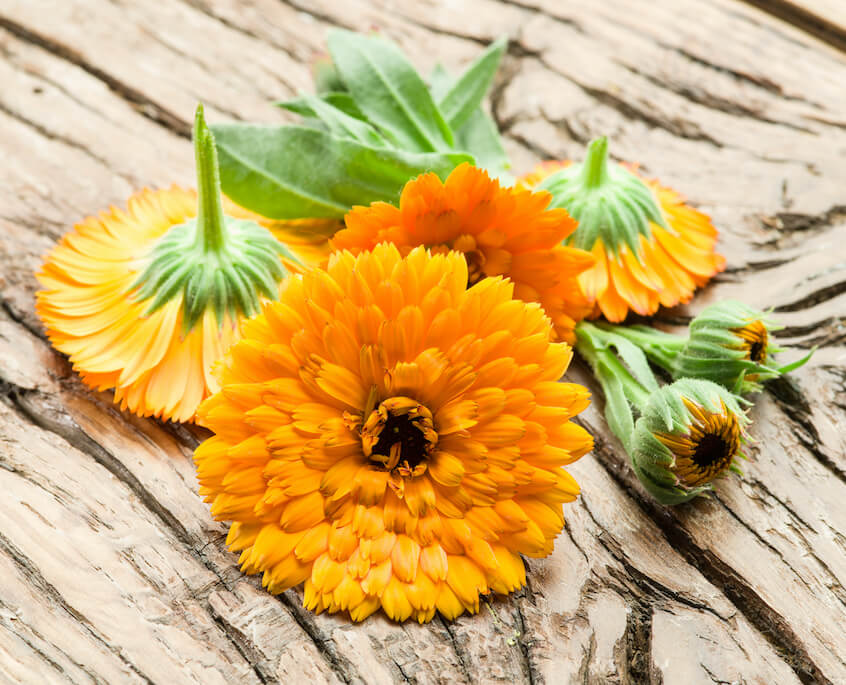
The old world English deemed Calendula officinalis as Queen Mary’s flower because she officially chose it to become a part of her emblem in the 1500s. The flower’s continued stance towards the sun is why she favored it. Ever since this flower has been called marigold (for Queen Mary and its gold vibrancy like the sun.) Additionally, the flower gained more notoriety when chosen by George Washington to be planted at his Mount Vernon home in 1767.
Today, it’s not uncommon to have Calendula flowers in salads, butter, blooming tea pods, or used to garnish dishes. Some countries dry and ground the flower petals into a fine golden powder and use it to season foods or as a dye for cheeses, fabrics, and beauty products. It’s even been referred to as “poor man’s saffron.”
Must-Knows About Calendula Teas
Most Calendula teas are brewed from the flowers of Calendula officinalis. Yet, there are very few variations of this tea. Calendula Grey tea (Earl Grey with an infusion of Calendula) and Assam tea with Calendula are available on the market. Surprisingly there were very few herbal blends containing Calendula.
What Does Calendula Tea Taste Like?
If eating a Calendula flower (in a salad or on its own), it will have a distinct bitter taste. When brewed to make a tea, the flavor is earthy and has a bite to it with a bitter, tangy, and peppery taste. Some use a bit of honey to help make the tea more agreeable.
Does Calendula Tea Have Caffeine?
Unless the tea is infused into a true tea (green, black, oolong, yellow or white,) it will not have caffeine. Tisanes (herbal teas) are caffeine-free. But an Assam-Calendula blend tea, for example, may contain up to 50 mg of caffeine in a six-ounce cup. The Calendula Grey will have about the same amount of caffeine, too, because it includes Ceylon tea which is a black tea. Black tea has caffeine.
Does Calendula Tea Make You Sleepy?
We did not find any supporting information stating Calendula tea as having a sedative effect. What may happen when drinking the tea is a state of relaxation because of the intentional time set aside to sit and enjoy tea. This is the number one reason why many tea drinkers covet that cup of tea in the middle of a busy day. It’s all about carving out a few minutes to recenter and recharge.
Is Calendula Tea Safe To Drink?
We are not medical experts and cannot safely advise or recommend consuming any tea. Some herbs may cause adverse reactions or interact with some medications, so it’s best to consult with your healthcare provider first.
Any plant used to make tea that has been exposed to pesticide applications is not safe to use for human consumption. So if using freshly picked Calendula, make sure the plant is pesticide-free.
The FDA (U.S. Food and Drug Administration) lists Calendulaofficinalis as “generally recognized as safe.” There is a lack of evidence-based reports or studies noting Calendula as toxic or dangerous for human consumption other than the Pharmaceutical and Biomedical Research article (Phytochemical Ingredients and Pharmacological Potential of Calendula officinalis), which cautions pregnant women that Calendula may “stimulate” labor.
Calendula Tea Side Effects
A research study entitled “The Role of Medicinal Plants in the Treatment of Diseases: A Systematic Review of Calendula officinalis” mentions that Calendula may cause an allergic reaction in some. It notes that some people who gargled with a Calendula tea infusion had serious reactions such as anaphylactic shock. This report also states pregnant women should avoid Calendula.
Calendula Tea Benefits
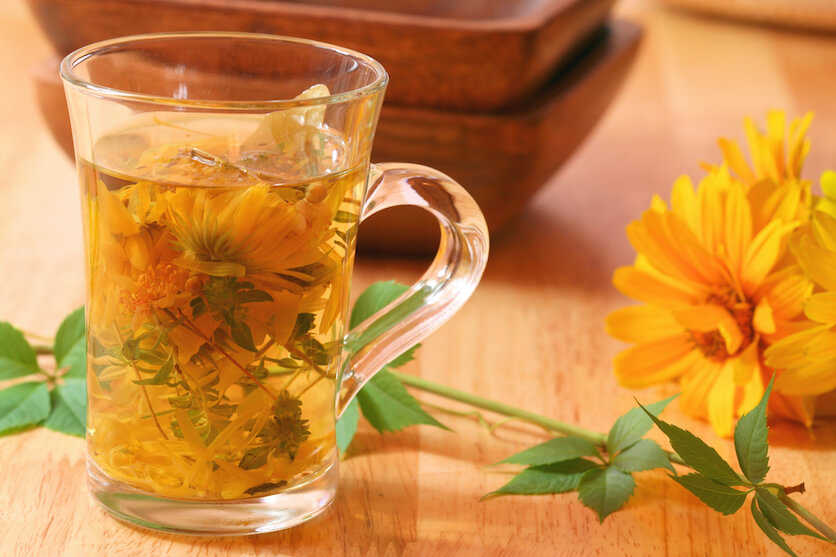
Herbalists, Ayurvedic, Unani, Chinese and Traditional medicine heavily rely on Calendula for numerous ailments and conditions. It’s believed that this herb helps with inflammation, skin conditions, bleeding, wound treatment, and more. Calendula tea is widely prescribed traditionally to treat internal organ inflammation such as stomach ulcers. The tea is also used as a gargle for throat inflammation and an eyewash for conjunctivitis.
Clinical research supporting the benefits of Calendula use is mentioned in “A review on Phytochemistry and Ethnopharmacological Aspects of Genus Calendula.” This study states Calendula officinalis having beneficial properties as antibacterial, antiviral, anti-inflammatory, and antioxidant. The Scholars Research Library published an article noting the pharmacological benefits Calendula offers as antiviral and anti-inflammatory.
Evidence-based information is somewhat limited as research is ongoing regarding Calendula and how it exerts bioactivity within humans. Most of the published research reflects results of studies done on Wistar rats rather than clinical studies (humans.)
How To Make Calendula Tea
The best way to enjoy this tea is with freshly plucked flower petals right from your garden. However, no worries because you can purchase this tea in either loose-leaf (dried petals) or tea bag form.
How Long Should Calendula Tea Steep?
This tea requires a longer steeping time. Generally, Calendula takes about 15 minutes to fully infuse into the water to make tea. Keep in mind this is for an unadulterated tea.
If the tea is an infusion of black, green, oolong, yellow, or white with Calendula, steeping will differ. Green, oolong, yellow and white teas are delicate and should never be over-steeped. Otherwise, it affects the flavor and quality of the tea. Your best bet with a tea blend like these is to follow the directions on the packaging.
Calendula Tea Recipe
We have two recipes to enjoy this tea. One is unadulterated and true to form without any other elements added. The other recipe is a sweeter, palatable tea that still has the benefits of Calendula.
Unadulterated Organic Calendula Tea
This is a straight-up hot tea with nothing more than Calendula in it. Note that this tea will have a bitter bite. You can add honey to tame it down a bit if desired.
Ingredients:
- 2 cups of water
- 1 teaspoon of loose-leaf Calendula officinalis (petals) or 1 Calendula tea bag
Directions:
- Bring the water to a boil.
- Remove from the heat.
- Place the loose-leaf Calendula in a tea infuser.
- Drop the infuser (or tea bag) into the hot water.
- Cover, and allow to steep for 15 minutes.
- Pour into a teacup and enjoy.
Sunshine Iced Calendula Tea
If you are an iced tea fan, this recipe will tickle your fancy! The blend of tea, orange, and Calendula is a great thirst quencher for those hot summer days.
Ingredients:
- 6 cups of water
- 3 teaspoons of loose-leaf Calendula
- 1 orange cut in half
- 6 teaspoons of loose-leaf Ceylon black tea
Directions:
Brew the Calendula tea first.
- Bring 3 cups of water to a boil.
- Remove from the heat.
- Place the loose-leaf Calendula into a tea infuser.
- Drop the infuser into the hot water.
- Cover, and allow to steep for 15 minutes.
- Uncover and allow the tea to cool off to room temperature.
Brew the Ceylon black tea.
- Bring 3 cups of water to a boil.
- Remove from the heat.
- Place the loose-leaf Ceylon tea into a tea infuser.
- Drop the infuser into the hot water.
- Cover, and allow to steep for 5 minutes.
- Uncover and allow the tea to cool off to room temperature.
Finish the tea.
- Pour the Calendula tea and Ceylon black tea into a tea pitcher.
- Using a bowl to catch the juice, squeeze both halves of the orange until all of the juice is gone.
- Strain the orange juice to remove the seeds and any pulp.
- Pour the strained orange juice into the tea pitcher.
- Stir the tea.
- Pour the tea into ice-filled glasses and enjoy!
There May Be Something To Calendula Tea
Perhaps Queen Mary’s favorite flower (Calendula officinalis) has potential both in beauty and as a tea. As with any other tisane (herbal tea,) do your homework and talk to your healthcare provider before consuming.
